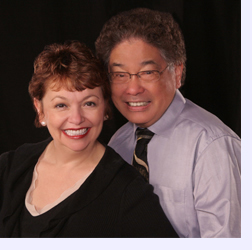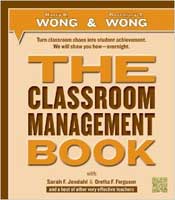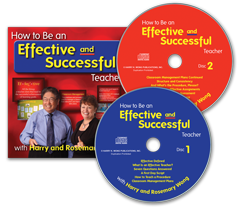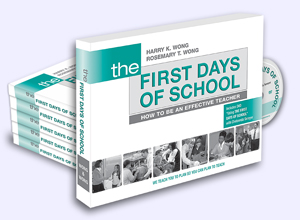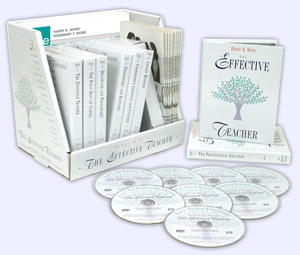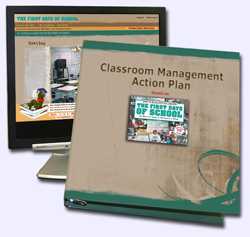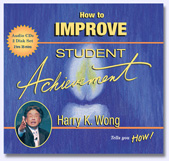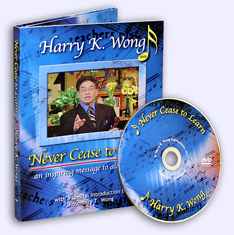|
 |

Special to the Gazette
April 2012
A Nationally Celebrated High School
Brockton High School
Today, Brockton outperforms 90 percent of the high schools in Massachusetts. They did not do this by reducing school or class size, buying expensive curriculum programs, or giving every student a tablet computer. They improved the instructional program. That is, they improved what and how students learn and what and how teachers teach.
Susan shares they turned down money to build walls to create small schools. They were smart, because after spending $2.6 billion, the Gates Foundation declared their failure with this initiative. Susan says, "It isn't about structure. It's about instruction." She adds, "The most powerful change agent is the classroom teacher." Almost ten years ago, Susan, then the chair of the Social Studies Department and the then English Department chair begged and badgered teachers to join them in a Restructuring Committee. Today, the committee is so successful and popular that they have to take applications for joining. The committee meets once a month on a Saturday—with pay. The Restructuring Committee’s plan is simple—create a literacy program and empower a team from within the school to implement it to make sure that every student has the right to succeed. The Two Reasons for Brockton’s Success We had the pleasure of visiting Brockton High School on January 10, 2012, and meeting Susan, associate principal Sharon Wolder, and many of the teachers. One did not have to look far to see the two reasons why Brockton has become a nationally celebrated school hosting hundreds of visitors each year.
Consistency in Pre-Calculus
Between classes, the hallways are empty as the students are all in their classrooms at work. Mind you, there are miles of hallways and nine buildings as the campus takes up the size of an aircraft carrier. Yet, the hallways are still during classroom instructional time.
There was no yelling or admonishments that prevail in so many classrooms when class begins. Everything was calm, consistent, and the procedure that everyone knew took, at most, five minutes, which then provided maximum time for Chris and his class to be involved with learning. Every class begins with an Opener which involves solving problems. After the homework is checked, students come to the chalkboard, solve the problems, and then explain the solution to their classmates. Every class involves some form of Lesson. It could be a presentation of new material using PowerPoint or other media, a review and discussion of homework problems, a quiz or test, or, as in this case, a reading and writing exercise. As part of Brockton’s emphasis on literacy, each department is regularly asked to have students read an essay, article, or a passage from a book and then write responses to questions related to the reading. On this day the students read and responded to “Why Do I Have to Take Algebra?” If you are wondering what a “Literacy Objective” is doing in a Pre-Calculus class, it’s one of the essentials in Brockton’s secret sauce. These are the ingredients in Brockton’s secret sauce:
Chris said that it was easy to teach the Agenda procedure the first day of school because the same format is used in other classrooms and the students have seen it the years before they come to his Pre-Calculus class. It’s the same as boarding an airplane regardless of the airline or the airport. There’s consistency that takes away the fear of flying. The students have no fear of going to Mr. Gagliardi’s class every day. They know what to expect and he delivers it—consistently. Consistency in Sophomore English Darlene Mulhall teaches English and uses a four-part lesson format. The four parts are a basic format used in all classes at Brockton:
When the students enter the room there is always a daily Opener posted on the front screen. Students know to begin writing immediately. After about five minutes there is discussion about what they have written. The writing and discussion directly connects to the first activity or the overarching objective for the day. Darlene starts the first day of school with an Opener. She walks around while students are writing and provides verbal feedback to those who need help until she assesses that everyone knows what and how to do an Opener every day.
The Closer takes place during the last four minutes of class. It is usually a question that requires students to sum up what they learned during the class period or it is a question that gets them thinking about an activity for the next day. Darlene chooses not to post all four parts of her schedule at the same time as she has found that some students are distracted during the Opener by the rest that was posted. A few students would even try to do the Closer fifteen minutes into the period which defeated the purpose of it. What she does now is put each part on a PowerPoint slide and shows each part at the appropriate time.
The consistency that Darlene uses in her lesson format each day does not mean cookie-cutter, lock-step, or copycat. Because there is consistency each teacher can modify the basic format to suit the class situation. Just as Southwest and American airlines board their passengers differently, yet there is consistency in their procedures. Students are quite able to learn the differences between each teacher’s modifications of the opening routine, as in the next example. Consistency in Spanish There is nothing more unsettling for a student than to not know what is happening in a classroom. The not knowing usually prompts the dreaded question, “What are we doing today?” Students want to learn and learning is most successful in a classroom where consistency is evident. There is a idiom, “from soup to nuts,” an expression that refers to everything from beginning to end. At many meals, soup is often the first course and a dessert with nuts is sometimes the last.
Noah is consistent in how he organizes the flow of work for his students. In a left to right progression, the students first see the overall purpose of the lesson. Noah calls it the Driving Question. This question remains on the board until the lesson is completed. Next to the Driving Question is the Do Now activity. This is what engages the students in learning with little wasted time whether they are in Social Studies or Spanish class. Year after year and classroom to classroom, the consistency remains the same. Everyone at Brockton High School does this. Next to the Do Now is the Agenda board. It tells the students how the lesson is going to progress.
Thus, the students see in a span of four boards their lesson context and their responsibility for the lesson. How can a student not succeed in a class like this when they are able to see everything from start to finish and have a teacher who knows how to help them succeed? “No one here would let me fail. I know, because I tried.”
In 2001, the Massachusetts state tests showed that the Brockton students were ranked as one of the lowest-scoring schools in the state with 59 percent proficient or advanced in English/language arts (ELA) and 25 percent proficient in math. In 2011, ten years later, Brockton High School improved to 78 percent proficient or advanced in ELA and 65 percent passing in math. Brockton’s learning gains in ELA are among the highest in the state when compared to other high schools, according to the state’s most recent calculations. This was due to the aforementioned Restructuring Committee that was formed to transform the school with the mantra of “No, this is not the best we can be!” The consensus of the Restructuring Committee was to form a literacy program that would be taught in every classroom by every teacher. Recall the picture of Noah Roseman standing in his Spanish classroom. Look at the picture and you will notice a series of charts above the chalkboard. These charts are found, consistently, in every classroom. What is taught from these charts has brought student success and Brockton its fame. These four literacy charts form the foundation of Brockton’s literacy program.
Too often, people think of literacy as teach reading first and follow with writing, when just the opposite is true. Research has shown that the best way to teach Reading is to teach Writing. You have seen how children love to draw, and then write as part of their drawing. Then, children are asked to read what they have written. Too often, reading can imply, “Sit still and read quietly,” whereas writing implies, “Get in there and create something.” Thus, putting writing before reading is an effective approach to teaching and learning. Another fallacy is many people think that writing and reading are all that comprise a literacy program. At Brockton, they go two steps further. They teach Speaking and Reasoning.
Improvement of test score growth notwithstanding, the greatest achievement of Brockton High School is they have taught their students how to Think and Communicate, every hour, every day, every activity. With the Tenacity of a Boxer A boxer dog is the mascot for Brockton High School and “Boxer Pride” is felt in all that they do. But don’t be misled. “Boxer Pride” dates back to the school’s sports history. Brockton is the alma mater for two hall of fame boxers, Rocky Marciano and Marvin Hagler and thus the Boxer moniker. And just like great boxers, the leadership of the high school was not going to let the poor morale and test scores knock them out. With training and coaching, they could fight their way to the top. Susan’s article, “Transformed by Literacy,” tells of the efforts that had to be surmounted to change the inertia of “students have a right to fail” to an expectation that all students could achieve. The strategy can be summarized in four steps:
Following the plan, Brockton has transformed itself from an environment with no consistency and no culture, to one recognized by all as a leader in creating an effective environment for student success.
The transformation is recorded in community success. Brockton was named one of the 100 Best Communities for Young People in the United States in 2005, 2008, and 2010 by America’s Promise Alliance. The organization recognizes the importance of education and the efforts the leadership of the school and elected officials are putting forth to reduce the dropout rate and to put its youth first. What Brockton has done is not easy. It takes great effort and effective leadership. It also takes a team of teachers who value a collegial atmosphere and help each other be the best they can be for their students. What Brockton has done is simple and eloquent. And that’s the beauty of its success. It was not schoolwide implementation of the current flavor-of-the-month program, not a top down mandate. It was teachers coming together, believing in the ability of children, crafting a plan so all could reach their full potential, and consistently implementing that plan—with tenacity—to create the culture of success. Students are graduating from Brockton High School not having to bob and weave anymore their way through their lives. They are able now to effectively reason and communicate their thoughts and actions and express them in ways that will be listened to and respected. They are “Gonna Fly Now” and become the test champions they are capable of being. Boxer Pride has reinvented itself and given the entire student body a chance to be part of the school culture that applauds victories of the cerebral kind.
|
|||||||||||||||||||||
|

 Each day,
Each day,  With the largest student body in New
With the largest student body in New The students at Brockton come from underachieving populations and from homes that may be challenging, if not chaotic. For seven hours a day at Brockton, they find a culture of consistency, predictability, and safety as they go from classroom to classroom.
The students at Brockton come from underachieving populations and from homes that may be challenging, if not chaotic. For seven hours a day at Brockton, they find a culture of consistency, predictability, and safety as they go from classroom to classroom. When we entered the Pre-Calculus classroom of
When we entered the Pre-Calculus classroom of  Next on the screen is the Agenda for the day. It briefly highlights the day's activities.
Next on the screen is the Agenda for the day. It briefly highlights the day's activities.



 How appropriate that you can find this in
How appropriate that you can find this in 

 The last board in the progression across the front of the classroom holds the Content Objectives that signify the student’s learning responsibility. These are the lesson targets or lesson objectives.
The last board in the progression across the front of the classroom holds the Content Objectives that signify the student’s learning responsibility. These are the lesson targets or lesson objectives.



 The transformation is recorded in individual student success. This current school year, 33% of the graduating class will receive
The transformation is recorded in individual student success. This current school year, 33% of the graduating class will receive 